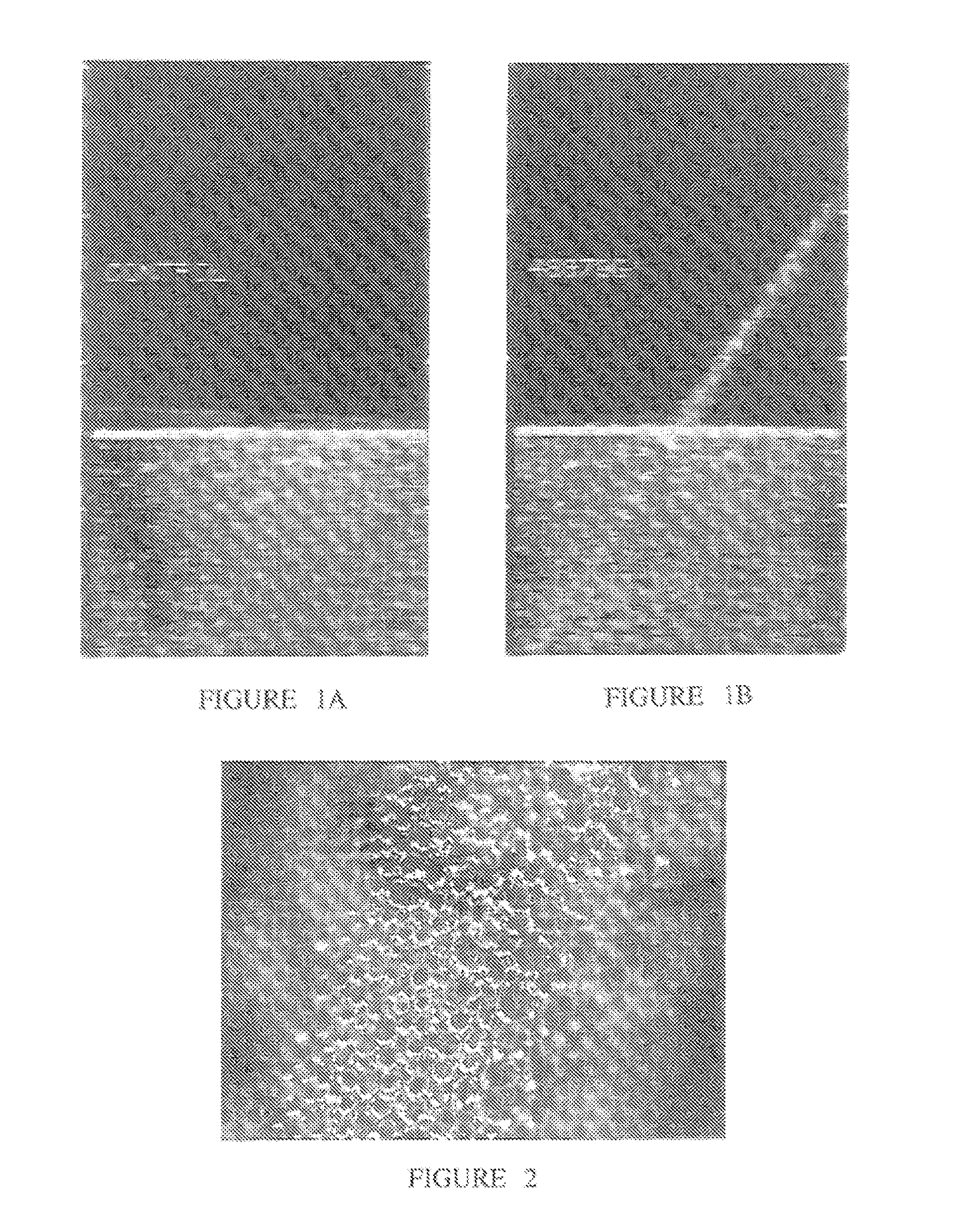Echogenic coatings with overcoat
a technology of overcoat and echogenic coating, which is applied in the field of echogenic coating, can solve the problems of not enhancing the ultrasound visibility of insertable medical devices, not as good as the other technologies, and increasing medical care costs and patient discomfort, so as to increase the ultrasound scattering, enhance the ultrasound visibility of surfaces, and improve the effect of ultrasound scattering
- Summary
- Abstract
- Description
- Claims
- Application Information
AI Technical Summary
Benefits of technology
Problems solved by technology
Method used
Image
Examples
example 1
[0117] A steel wire was dip-coated in a precoat solution consisting of an acrylic polymer, a polyolefin / acrylic co-polymer, and isocyanate, dissolved in a mixture of tetrahydrofuran and cyclohexanone, and cured. The wire was then dip-coated in a base coat solution consisting of cellulose ester, an acrylic polymer, and a polyurethane resin, dissolved in a mixture of solvents including cyclohexanone, tetrahydrofuran, ethyl acetate, and benzyl alcohol, and cured. This device was then coated with an echogenic coating solution comprising 20% isocyanate pre-polymer dissolved in a mixture of 50 percent (w / w) dimethylsulfoxide in tetrahydrofuran. The coating was then partially dried at room temperature for 3 to 5 minutes to allow some of the THF (which is the more volatile solvent) to evaporate. The isocyanate pre-polymer polymerizes on exposure to water and gives off carbon dioxide. The device was dipped in water at room temperature for three minutes to cause the polymerization reaction to...
example 2
[0118] A steel wire was coated with a precoat and basecoat as in Example 1. The wire was then coated with a 20% isocyanate prepolymer dissolved in tetrahydrofuran with 1% surfactant (silicone). Polymerization was brought about by applying steam to the coated device for two minutes. An echogenic coating of the bubble / cavity / pore type was formed.
example 3
[0119] An echogenic coating solution contained 90% acrylic polymer in water. This liquid was sonicated for 40 seconds to provide the desired bubble size. A wire was coated with the coating liquid and dried in air at room temperature. An echogenic coating with channels was formed.
PUM
| Property | Measurement | Unit |
|---|---|---|
| thickness | aaaaa | aaaaa |
| thickness | aaaaa | aaaaa |
| flexural modulus | aaaaa | aaaaa |
Abstract
Description
Claims
Application Information
 Login to View More
Login to View More - R&D
- Intellectual Property
- Life Sciences
- Materials
- Tech Scout
- Unparalleled Data Quality
- Higher Quality Content
- 60% Fewer Hallucinations
Browse by: Latest US Patents, China's latest patents, Technical Efficacy Thesaurus, Application Domain, Technology Topic, Popular Technical Reports.
© 2025 PatSnap. All rights reserved.Legal|Privacy policy|Modern Slavery Act Transparency Statement|Sitemap|About US| Contact US: help@patsnap.com



